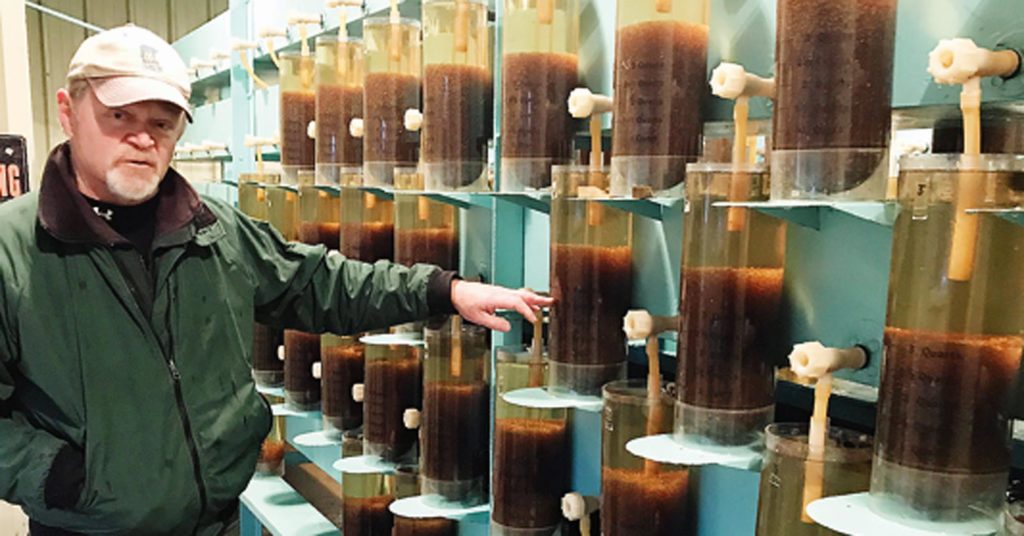
It’s Incubation Time at the Pike River Hatchery
A strong walleye run and a lower-than-average egg quota this year allowed Tower area DNR fisheries staff to wrap up egg-stripping operations in just four days. Hatchery manager Jeff Eibler couldn’t say whether that’s the shortest time for egg-stripping ever at the hatchery here, but it’s the shortest since he’s been in charge at the facility.
“We put in our nets on the seventh of April, starting egg stripping on the twelfth and were done by afternoon on the fifteenth,” he said.
This year, a low quota of just 708 quarts of eggs probably helped shave at least a day off the operations. According to Eibler, the quotas are determined based on the cumulative requirements of lake management plans throughout the state. “Those numbers just happened to be down this year,” he said.
With the egg-stripping completed, it’s incubation time at the hatchery and that means the facility must be staffed 24 hours a day until the eggs hatch, which Eibler expects to happen the week before fishing opener. Hatching time creates its own set of logistical concerns, since the DNR staff tries to get the young fry to their designated lakes within a day, or two at the latest. That gives the young walleye a longer period to transition from relying on their small yolk sacs to feeding on zooplankton, which will remain their primary food source for their first few months. The young fry can only go about 3-5 days without finding food, so the quicker they make it to their destination, the better their chances of survival.
This year, said Eibler, the short window for egg-stripping means the eggs will hatch pretty much all at once, which will mean a hectic few days as fisheries staff work to get the roughly 20 million fry to their various destinations. That’s not so unusual for the fisheries staff. Their hatchery operations involve intense activity during the egg-stripping phase, lots of waiting and monitoring while the eggs incubate, and a mad rush at the end to get all the fry distributed.
Read the full article at Timberjay.com
Read eVermilion